
Health & Medicine
Penguin viruses in the frozen continent
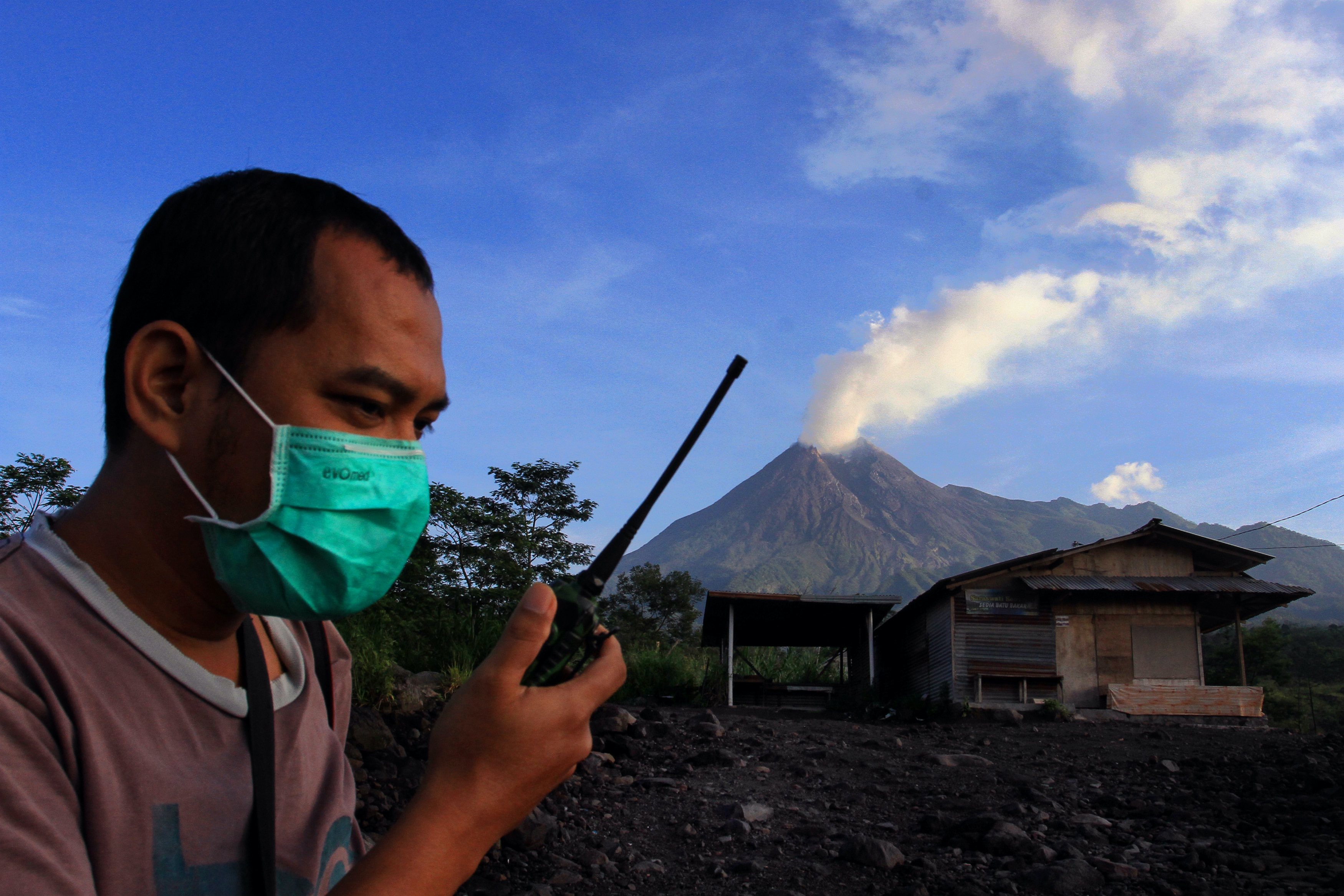
How would people and systems cope if a major earthquake or cyclone occurs while the COVID-19 pandemic continues? The answer is – preparation is key
Published 6 May 2020
The COVID-19 pandemic is a complex global crisis without contemporary precedent. In just about every country around the world, the pandemic response is taking up the bulk of resources, expertise, time and effort.
But, how would people and systems cope if a major natural hazard, like an earthquake or a tropical cyclone, occurs while the COVID-19 pandemic continues?
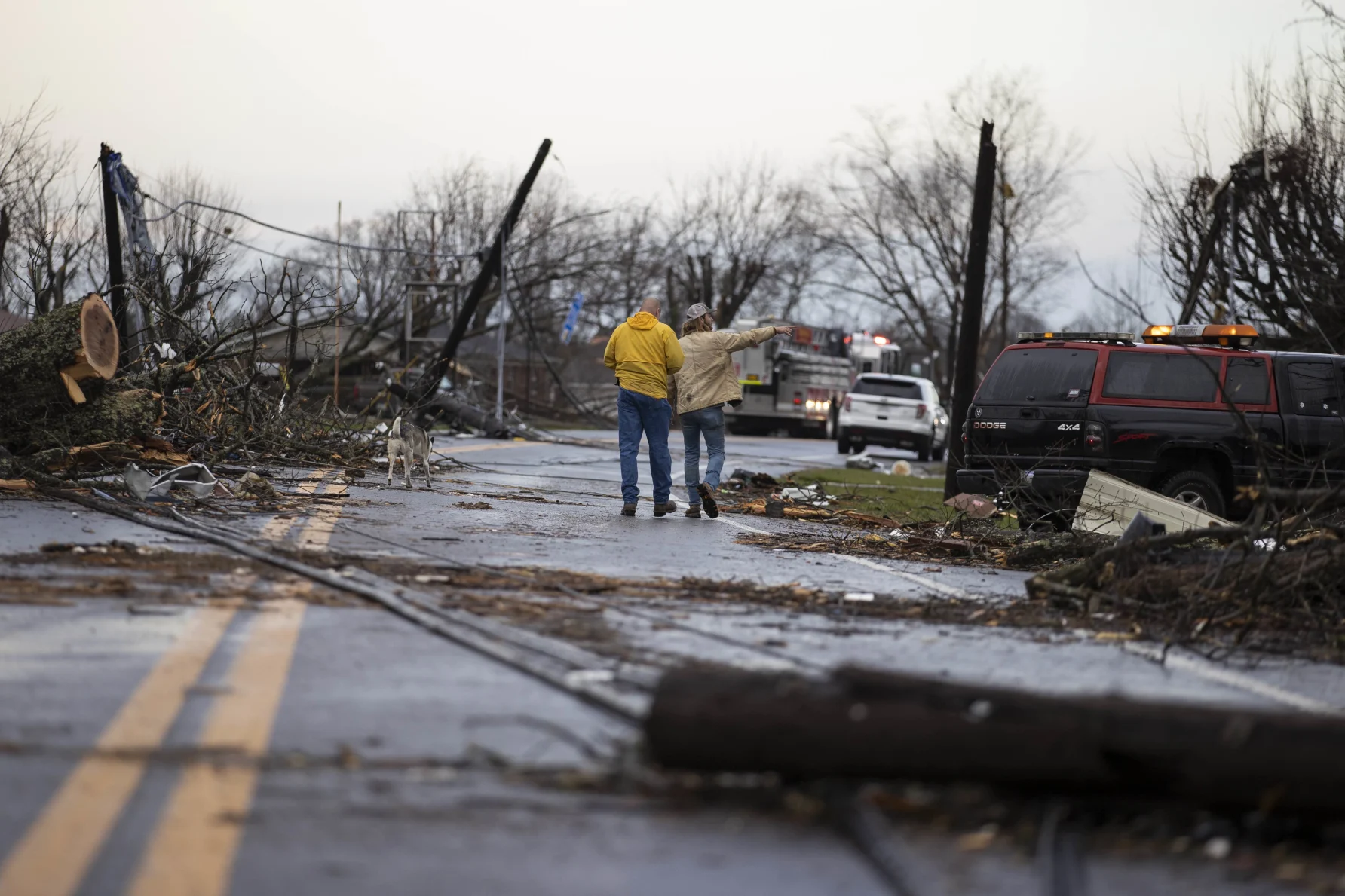
Our new research combines simple epidemiological models with natural hazard curves to investigate potential scenarios that could eventuate in several different countries, if there were to be a natural disaster.
Importantly, it also outlines several strategic steps that governments and disaster management agencies might consider to minimise risks during the pandemic.
In January 2020, as devastating bushfires drove thousands of Australians to evacuate their homes, China imposed a lockdown in Hubei province to mitigate the outbreak of a novel coronavirus disease we now know as COVID-19.

Health & Medicine
Penguin viruses in the frozen continent
By the end of the month, as the bushfires began to die out, COVID-19 had emerged as a global pandemic that by late April, had caused more than 233,000 deaths around the world.
A government and agency response to a crisis – whether it’s bushfires or a pandemic – is informed by expert knowledge, data, experience and advice about societal exposure and vulnerability to the hazard.
Collectively, these, and our recovery, help define resilience.
But what happens when crises occur simultaneously? Emergency responses for many natural hazards involve evacuation into communal centres, but clearly this poses other risks during a pandemic.
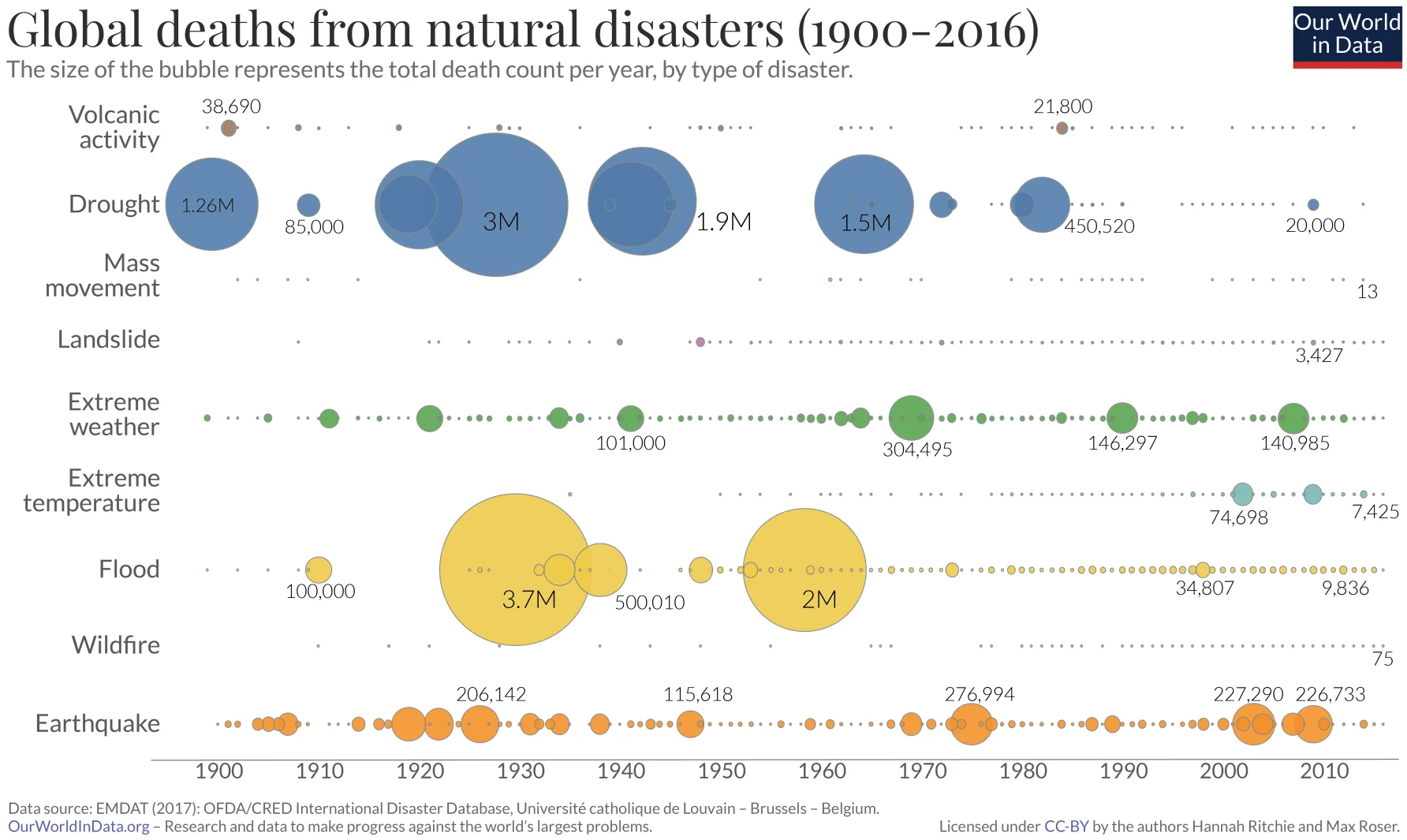
One thing is clear: the way that the COVID-19 crisis is handled now strongly influences the potential impacts of any natural disasters.
There is a history of epidemics following natural disasters.
The 2004 South Asian Tsunami that killed more than 250,000 people and displaced more than 1.7 million across 16 countries produced ideal conditions for an Acute Respiratory Infection outbreak in Aceh, Indonesia – the worst hit region.

Arts & Culture
Journal of the plague year
In 2010, the first Cholera outbreak in more than a century in Haiti resulted in 8,183 deaths which was amplified by damage to infrastructure caused by the preceding earthquake.
In fact, following any meteorological (that is cyclones, floods, tornadoes) or geophysical (earthquakes, volcanic eruptions) disaster that displaces large numbers of people, epidemic diseases like diarrhoeal diseases, Hepatitis A and E, measles, meningitis, acute respiratory infections, malaria or dengue often emerge.
But 2020 put us in uncharted territory.
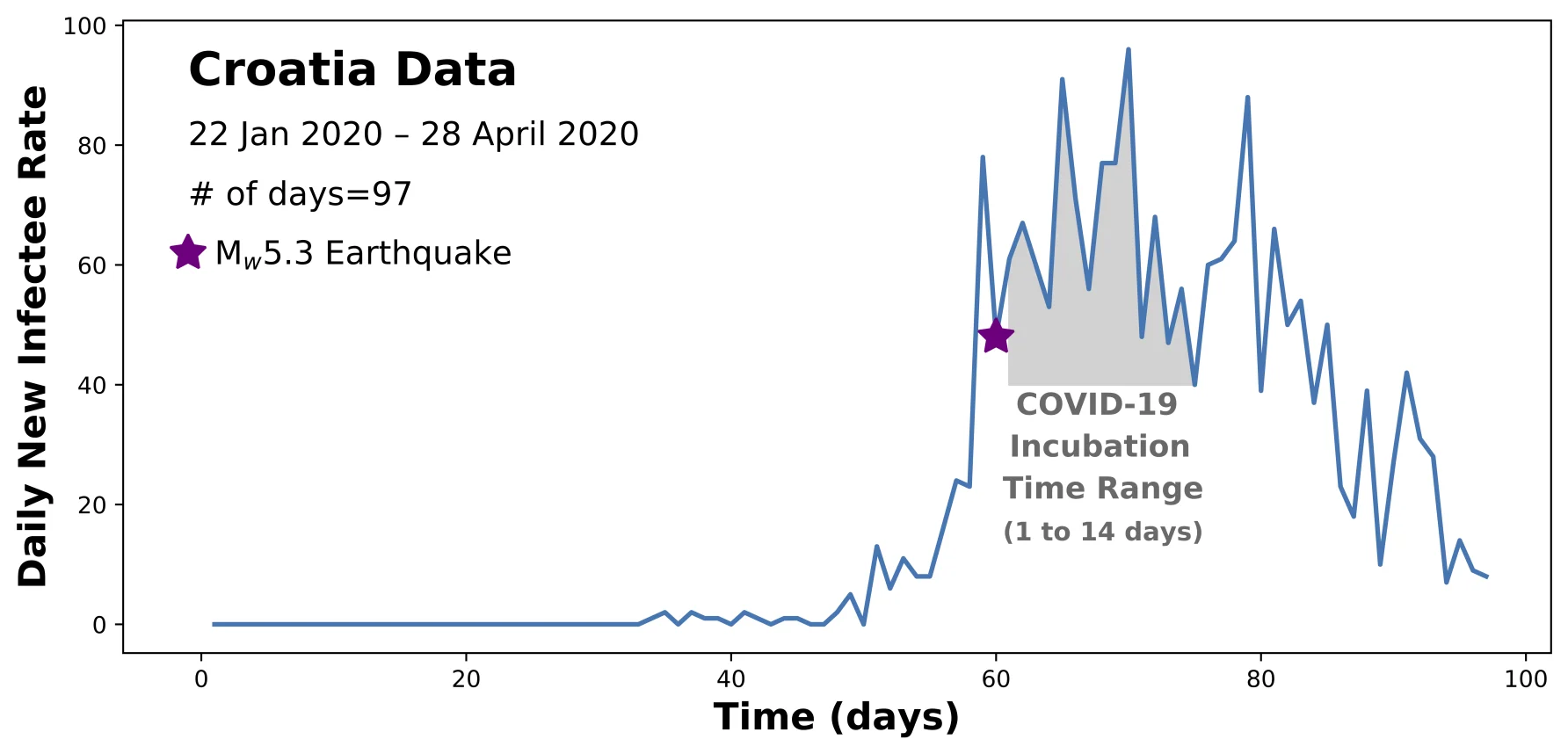
The COVID-19 pandemic is in full swing and impending natural disasters can compound the already heightened socio-economic vulnerabilities caused by COVID-19.
But, some countries have already experienced these dual crises.
In late March, a magnitude 5.3 earthquake hit Zagreb, the capital of Croatia, disrupting newly-introduced lockdown measures.
While the full effect of this temporary disruption on COVID-19 infections is yet to be understood in detail, according to our analysis of the data available, there was an apparent increase in the rate of infections in the days following the earthquake.

Health & Medicine
The COVID-19 vaccine difference between men and women
Several other concurrent natural disasters have caused damage and disrupted social distancing measures including Tropical Cyclone Harold in the Pacific, the eruption of Anak Krakatoa Volcano in Indonesia and tornadoes in the United States; the impact of these disasters is yet to be gauged.
So you have on one hand, according to the initial media and operational reports, the fact that COVID-19 counter measures can hamper the emergency response to disasters like these.
Then on the other hand, the disruption to social distancing that can increase the potential for infection.
This is a potential double whammy that governments may have to deal with in the next few months – maybe years. And preparation is key.
To understand the potential impact of a pandemic-natural disaster hybrid scenario, we combined epidemic projection models with natural hazard models to come up with two preliminary examples.
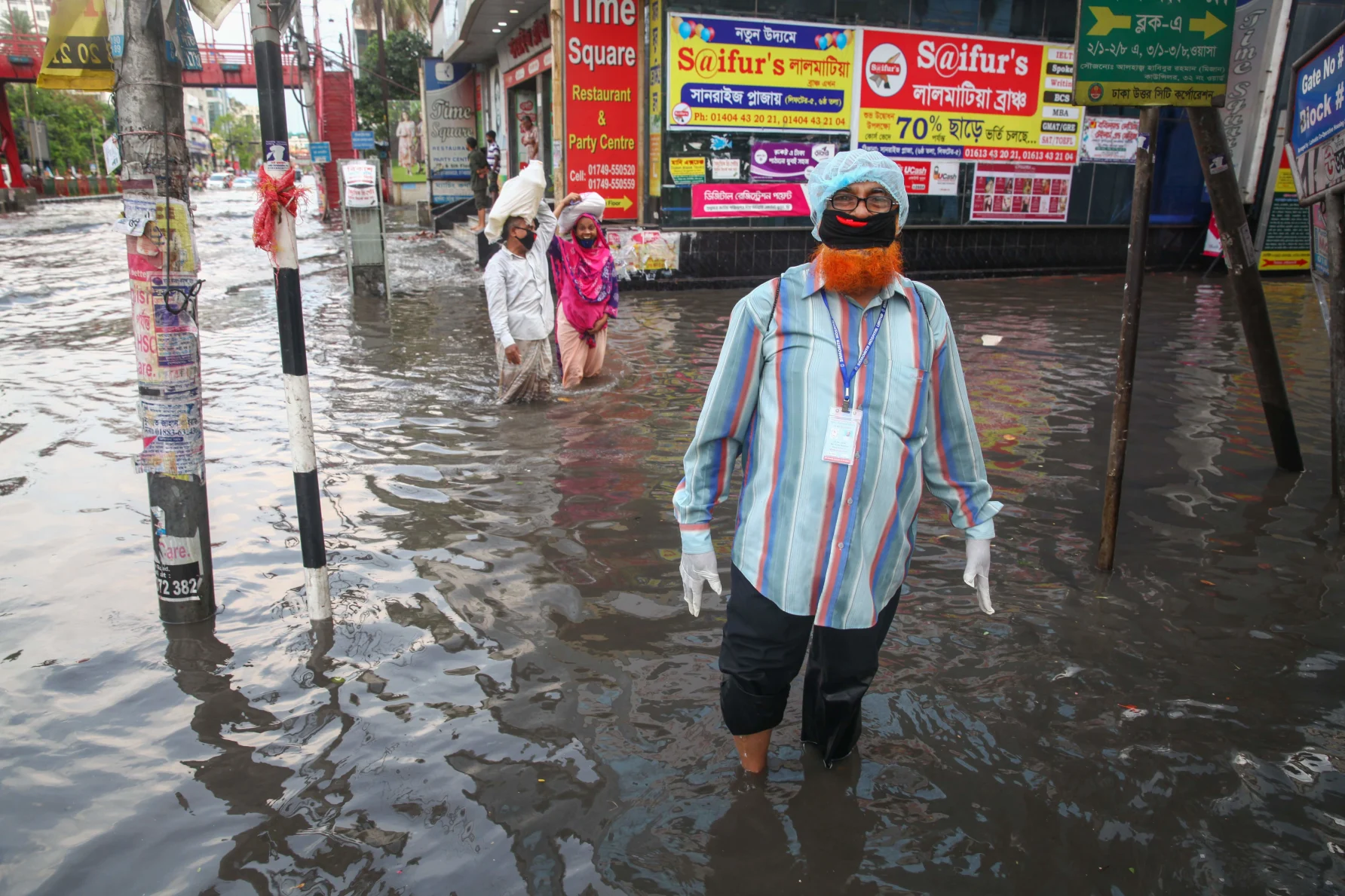
Our team used a publicly available epidemic forecasting platform to look at how the effectiveness of COVID-19 responses can influence projections of the infection rate and fatalities in United States, Australia, Bangladesh and China.
These projections are worked out by minimising the difference between the number of confirmed fatalities and those predicted by an epidemic model for a given period of time, which takes into account factors such as how contagious COVID-19 is (the reproduction number: R₀) and how effective counter COVID-19 measures are (quantified as percentages).
Our projections, although quite simplistic and uncertain, emphasise the need for sustainable effective COVID-19 counter measures.

Health & Medicine
The morals and ethics of the COVID-19 frontline
Looking at Figure 3 below, the projected fatalities in the United States (on panel A) could rise from around 92,000 (the dashed grey line) to 220,000 (the solid grey line) if the counter measures are relaxed by only 10 per cent.
To give this some context, we also looked at the seasonal hazard curves alongside COVID-19 projection curves. Seasonal natural hazards – like floods, hurricanes and tropical cyclones, heat waves, wildfires and tornadoes – have the potential to exacerbate the impact of COVID-19.
The overall probability of these natural hazards occurring in the United States, Bangladesh and China actually increases over the next few months, while here in Australia, their probability diminishes over the same period.
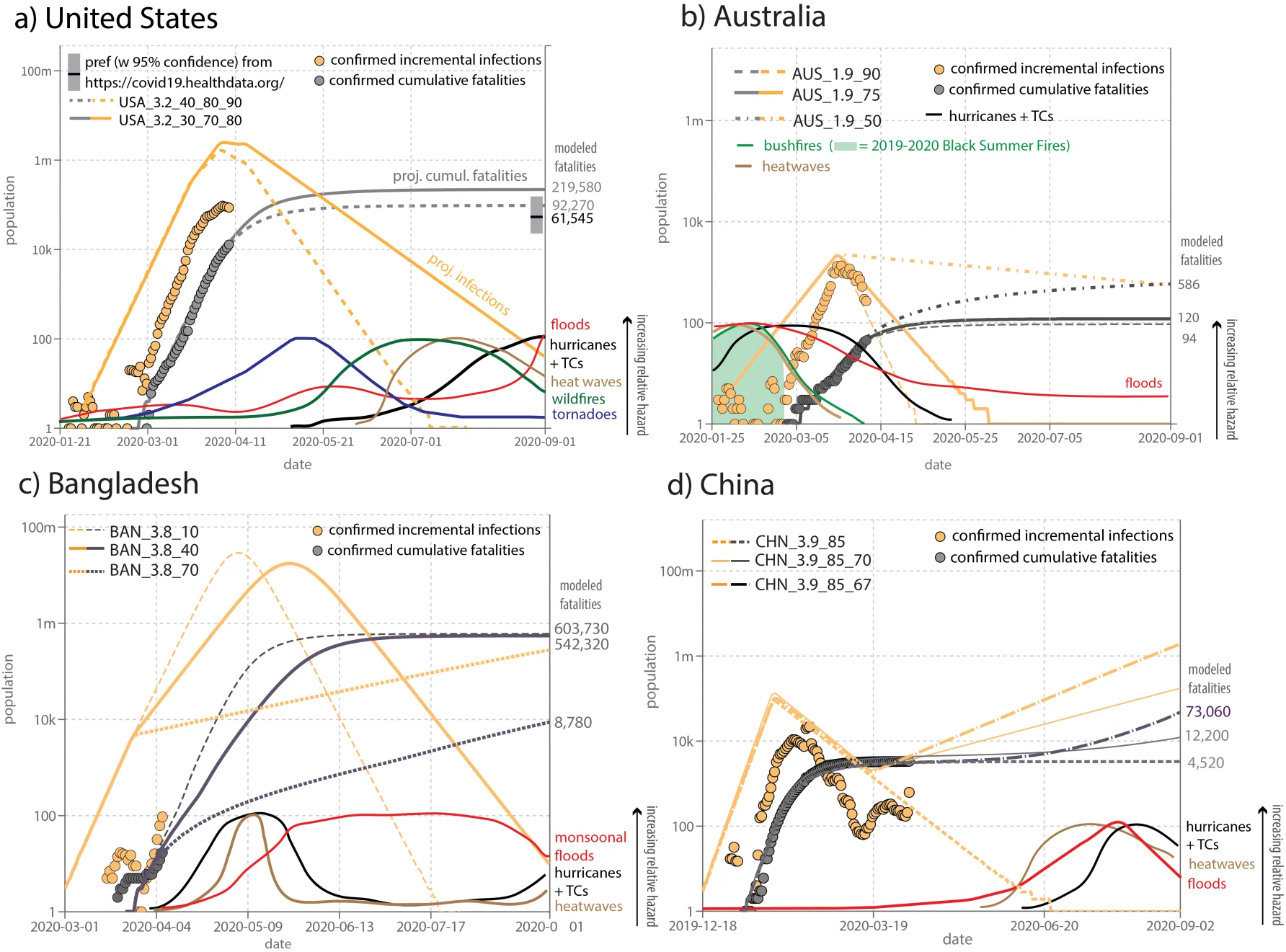
So, during the Northern hemisphere’s summer, countries like the US, Bangladesh, and China are particularly exposed to compound risks of the pandemic and natural disasters.
Using a simple epidemic model, we investigated the impact of the timing of a potential natural disaster on the daily new infection rate curve.
It’s this curve that governments are attempting to “flatten” in order to manage the demand on health care services. Early analysis shows that these interventions have substantially curtailed the demand on health services to date.
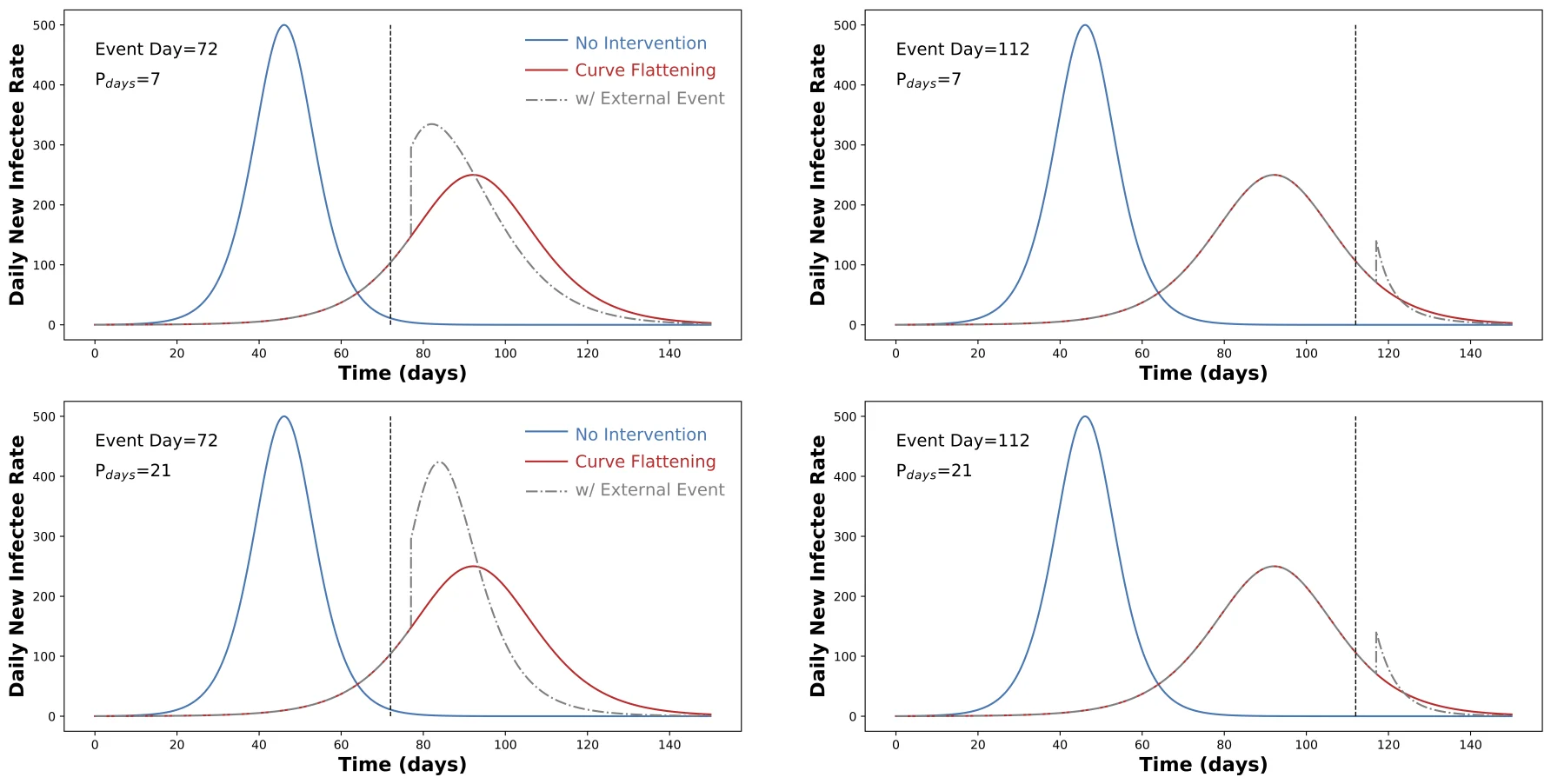
In the Figure 4 above, the blue curve illustrates a typical background daily infection rate before any intervention and the red curve is the infection rate with flattening measures in full force.
We then introduced an external event, like a natural disaster, to the flattened curve.
Our team introduced this event on either side of the infection rate peak (before the peak in the left column and after peak in the right).
We also assume a COVID-19 incubation period of five days and that flattening measures can be fully re-enforced after a specified number of days (days, 7 and 21 used here) following the hazard.
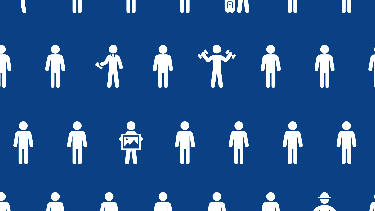
Health & Medicine
The science behind the search for a COVID-19 vaccine
The infection rate curve with an external event is illustrated by the dash-dot grey curve, which shows an increase in infection rate above the flattened curve to varying degrees.
This experiment provides two important insights.
The first is that the increase in infection rate is greater for events occurring in the pre-peak period than the post-peak period. The second is that the infection rate increases with the time it takes to fully re-introduce social distancing measures.
While these two modelling examples have uncertainties, they emphasise the multidimensional nature of decisions that have to be made for COVID-19 counter measures to be effective during natural disasters.
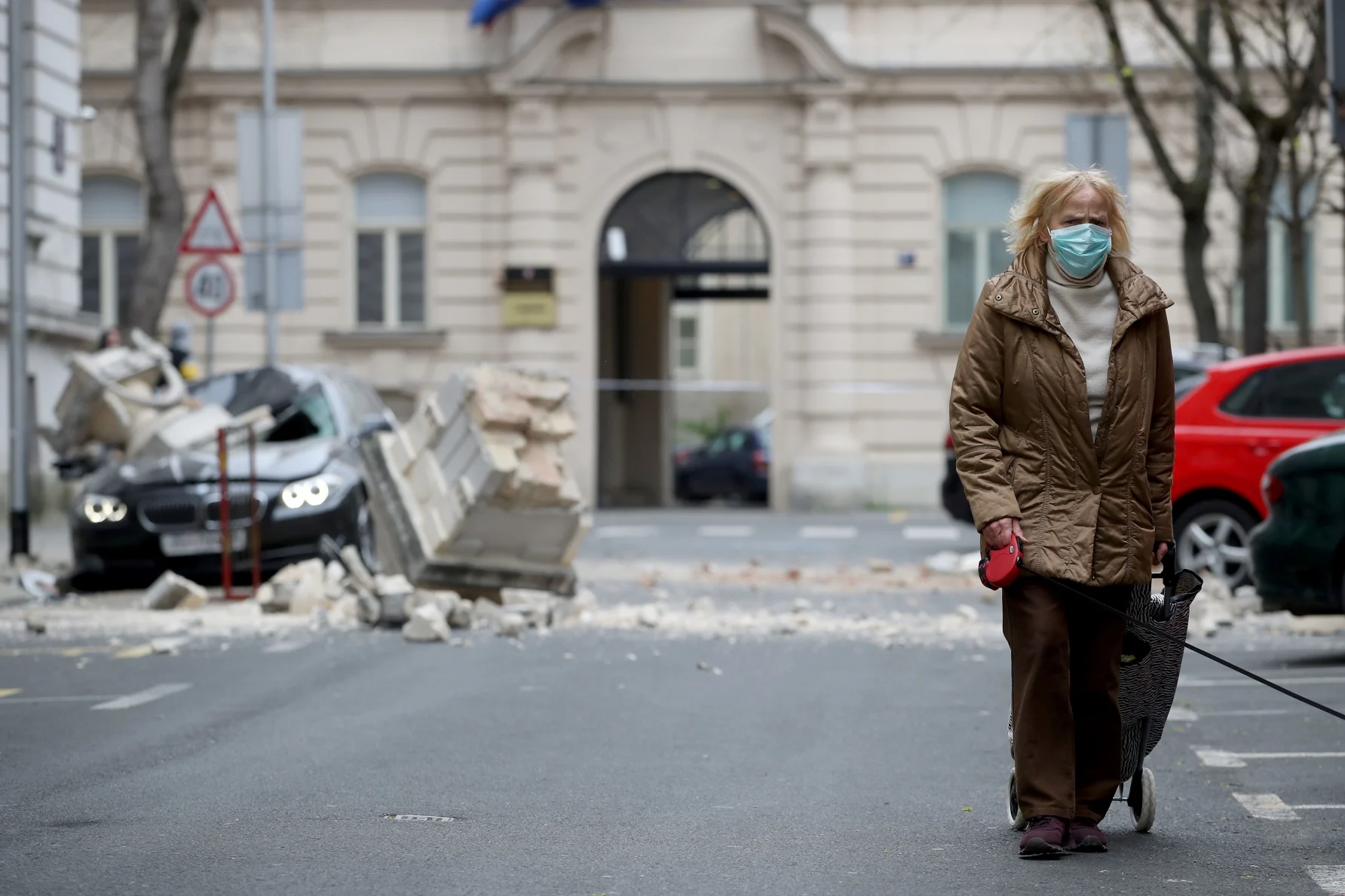
In the absence of a vaccine, projections of COVID-19 transmission indicate that the current crisis will be a protracted one.
But there are four pre-emptive strategies that governments can adopt to counter the compound risks of COVID-19 and natural hazards.
First, identifying possible pandemic-natural disaster hybrid scenarios including worst-case scenarios is critical; this requires the building of new hybrid forecast models that combine existing pandemic projection models and natural hazard forecasting.

Business & Economics
The COVID-19 shock to supply chains
Secondly, emergency responses to extreme events can be modified in advance by considering seasonal weather forecasting models.
There are already predictions of an above-average Atlantic hurricane season this year, so it is likely that a major hurricane could make landfall in North America in the next few months, so planning ahead is key.
Thirdly, a re-design of policy responses is needed to address different natural hazards with a focus on social distancing. Policy changes must be introduced to a wide range of post-disaster activities, ranging from emergency aid distribution to providing shelter.
Finally, supporting relief agencies serving lower income communities or regions and their governments is important as impacts of compound effects on these areas are likely to be disproportionately high.
While the primary focus of many governments is on managing the COVID-19 crisis, planning for potentially concurrent natural disasters is also crucial to ensure communities are adequately prepared for the complexities that could arise from overlapping crises.